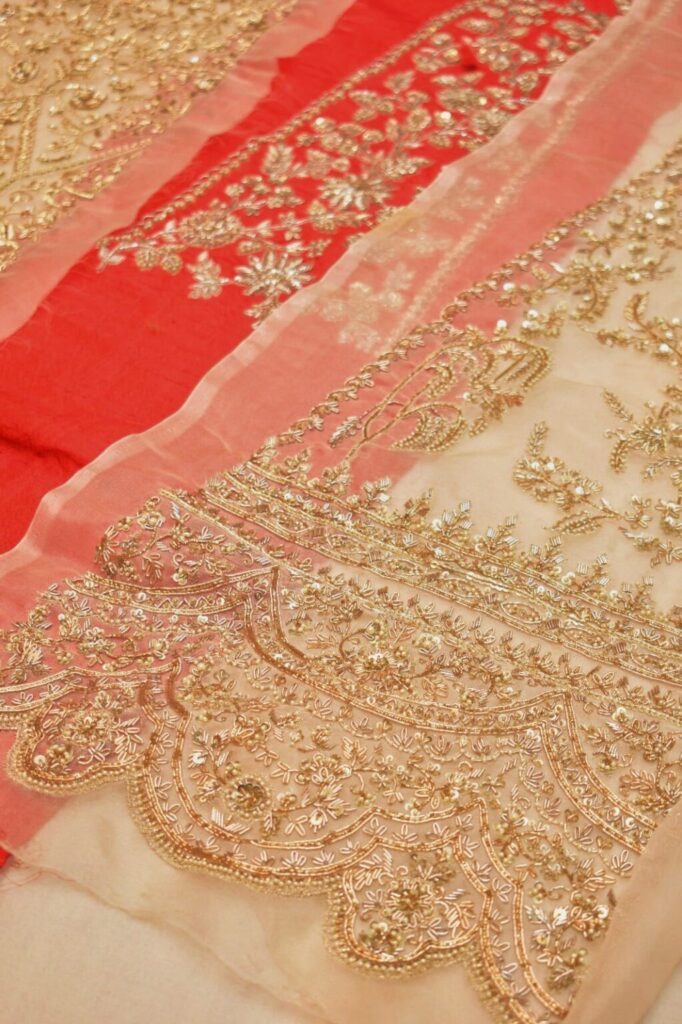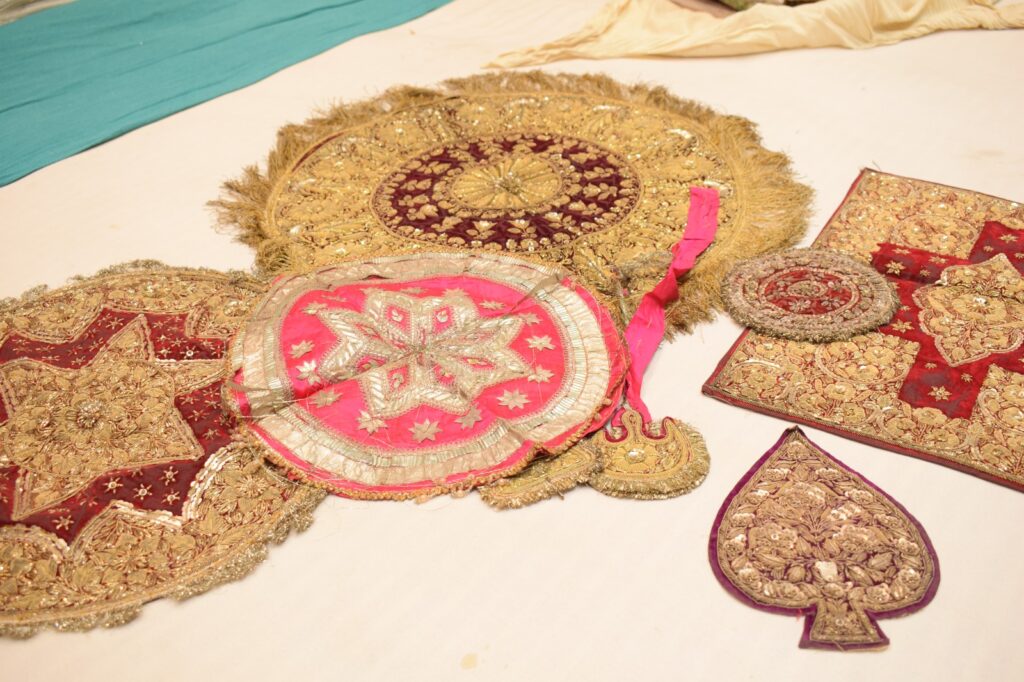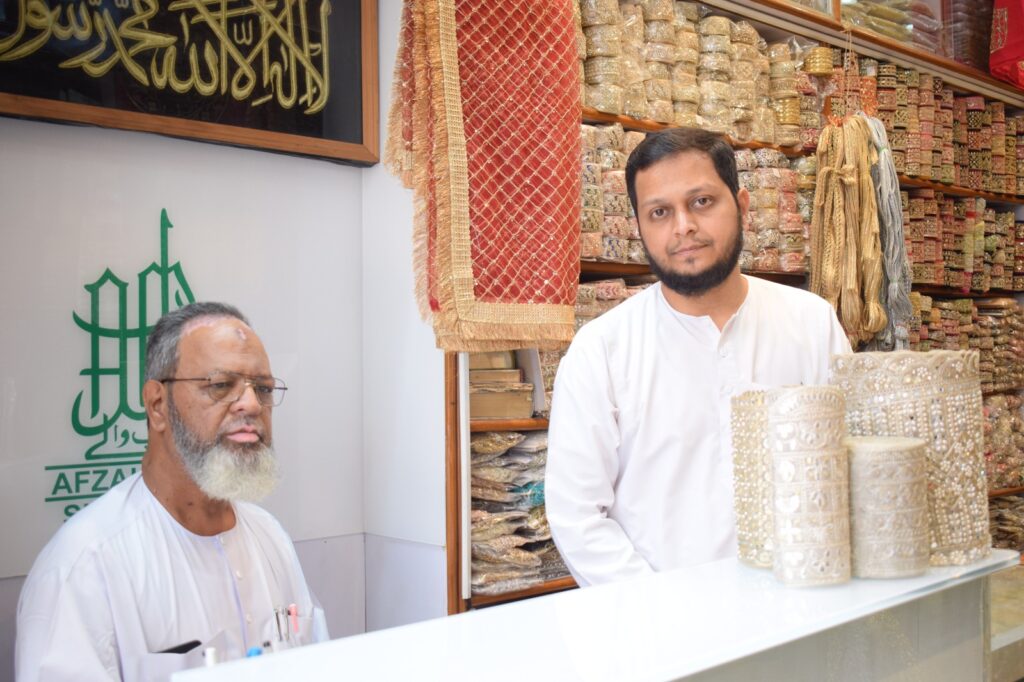A master of the ancient Karchob embroidery, Hyderabadi artisan Syed Ali has spent decades preserving this intricate metallic threadwork. Known for its rich, detailed motifs, the traditional craft is making a modern comeback. Syed Ali blends old-world techniques with contemporary designs, keeping the heritage alive for future generations.
In the bustling lanes of Hyderabad, where tradition and modernity blend seamlessly, artisans like Syed Ali are quietly preserving a centuries-old craft: Karchob metallic embroidery. This intricate form of embroidery, which involves delicate metallic threadwork to create ornate designs, is a defining part of Hyderabad’s cultural and artisanal heritage. Syed Ali, one of the few remaining master craftsmen of Karchob, has dedicated his life to ensuring that this legacy continues to thrive, blending traditional techniques with modern sensibilities.
The Origins of Karchob Embroidery
Karchob, a form of metallic embroidery, has its roots in the Mughal era, when skilled artisans would adorn royal garments, tapestries, and textiles with elaborate designs using gold and silver threads. The craft spread across the Indian subcontinent and became particularly popular in the Deccan region, where Hyderabad emerged as a hub of cultural and artistic patronage. The Nizams, the former rulers of Hyderabad, were known for their luxurious lifestyle, and Karchob embroidery played a prominent role in decorating their royal regalia, including sherwanis, saris, and even ceremonial accessories.
The term “Karchob” comes from the Urdu word “Karchob ka kaam,” which refers to a specific technique where designs are first traced onto fabric, and metallic threads are stitched along the lines to create intricate, raised patterns. Traditionally, these threads were made of real gold or silver, making Karchob embroidery a luxury craft that symbolized wealth and opulence.
However, as times changed and mass production began to take over, Karchob embroidery, like many other traditional crafts, began to fade from prominence. Today, it is practiced by a small number of artisans, and Syed Ali is among those who have taken it upon themselves to preserve this intricate art.
A Life Dedicated to Craftsmanship
Syed Ali’s journey into the world of Karchob embroidery began at a young age. Born into a family of artisans, he was introduced to the craft by his father, who was also a skilled Karchob embroiderer. “I grew up watching my father work with gold and silver threads, weaving stories onto fabric,” Syed Ali recalls with a glint of nostalgia in his eyes. “The art fascinated me, and it wasn’t long before I took up the needle myself.”

In the early days, the young Syed Ali apprenticed under his father, learning not only the technical aspects of Karchob but also the deeper cultural and historical significance of the craft. “My father used to say that each stitch was like a connection to our past, to the royalty who wore our work, and to the artisans who passed the skill down through generations.”
As the years passed, Syed Ali became a master craftsman, renowned for his intricate designs, precise stitching, and ability to bring modernity to a traditional art form. His creations, ranging from sherwanis and bridal lehengas to home décor items like cushion covers and wall hangings, have caught the attention of fashion designers and collectors alike, both in India and abroad.
The Karchob Technique: An Art of Patience and Precision
At the heart of Karchob embroidery lies a painstaking process that requires immense patience and precision. The first step in creating a Karchob piece is selecting the fabric, which is typically velvet, silk, or other rich materials that can withstand the heavy metallic threads. Once the fabric is chosen, the design is meticulously traced onto it using chalk or fine tracing paper.
The next step involves the actual embroidery. The artisan uses a specialized needle to sew metallic threads—often gold, silver, or copper—onto the traced design. The threads are often combined with beads, sequins, and stones to add more texture and depth. What makes Karchob embroidery truly unique is the way the threads are layered and intertwined to create a three-dimensional effect. The raised patterns give the fabric an opulent, sculpted appearance, making it ideal for ceremonial and festive wear.
Syed Ali explains, “Each design can take days, sometimes weeks, to complete depending on the complexity. It’s a slow, meditative process. Every stitch has to be perfect, or it disturbs the entire pattern.”
The motifs used in Karchob embroidery are often inspired by nature—floral patterns, peacocks, and vines are common themes. Some designs also reflect Islamic art, incorporating geometric shapes and arabesques that symbolize the rich cultural tapestry of Hyderabad.
Struggles and Revival
Despite the beauty and historical significance of Karchob embroidery, the craft has faced numerous challenges over the years. The rise of machine-made embroidery, cheaper materials, and the shift towards fast fashion have all contributed to a decline in demand for hand-embroidered pieces. Additionally, the labor-intensive nature of Karchob makes it difficult for artisans to compete with factory-made garments that are produced quickly and sold at lower prices.
For Syed Ali, this decline has been a source of deep concern. “Many young artisans have left the profession because it’s hard to make a living. People don’t appreciate the time and effort that goes into handmade pieces anymore,” he laments.
However, in recent years, there has been a renewed interest in traditional crafts, thanks in part to a growing appreciation for slow fashion and sustainability. Fashion designers in India and abroad are increasingly incorporating Karchob embroidery into their collections, recognizing its potential to add a touch of luxury and heritage to contemporary designs.
Syed Ali has been at the forefront of this revival. Collaborating with designers and boutiques, he has helped bring Karchob back into the spotlight. His work has been featured in fashion shows, exhibitions, and even weddings of the elite, where brides and grooms opt for bespoke Karchob-embroidered attire to add a regal touch to their special day.
Passing on the Legacy
One of Syed Ali’s greatest concerns is ensuring that Karchob embroidery does not disappear with his generation. He has taken it upon himself to train the next generation of artisans, offering workshops and apprenticeships to young people interested in learning the craft. “It’s important to pass on this knowledge,” he says. “If we don’t, it will be lost forever.”

Through these efforts, Syed Ali hopes to inspire a new wave of artisans who will carry the tradition forward while also innovating and finding new ways to keep the craft relevant in the modern world.
Conclusion: A Legacy of Craftsmanship
Syed Ali’s dedication to Karchob metallic embroidery is more than just a profession—it is a passion, a calling to preserve a piece of Hyderabad’s cultural heritage. Through his meticulous craftsmanship, he continues to tell stories with every stitch, weaving the past and present together in a way that speaks to both tradition and innovation.
In a world that often prioritizes speed and mass production, artisans like Syed Ali remind us of the value of patience, precision, and the beauty of handmade art. As Karchob embroidery experiences a resurgence, Syed Ali’s work ensures that this ancient craft will continue to shine, much like the metallic threads he so skillfully weaves into his creations. #hydkhabar

